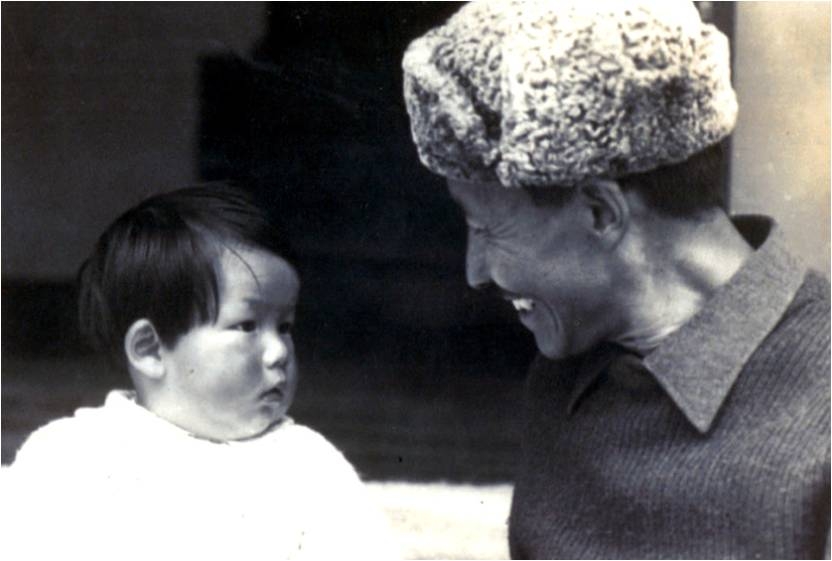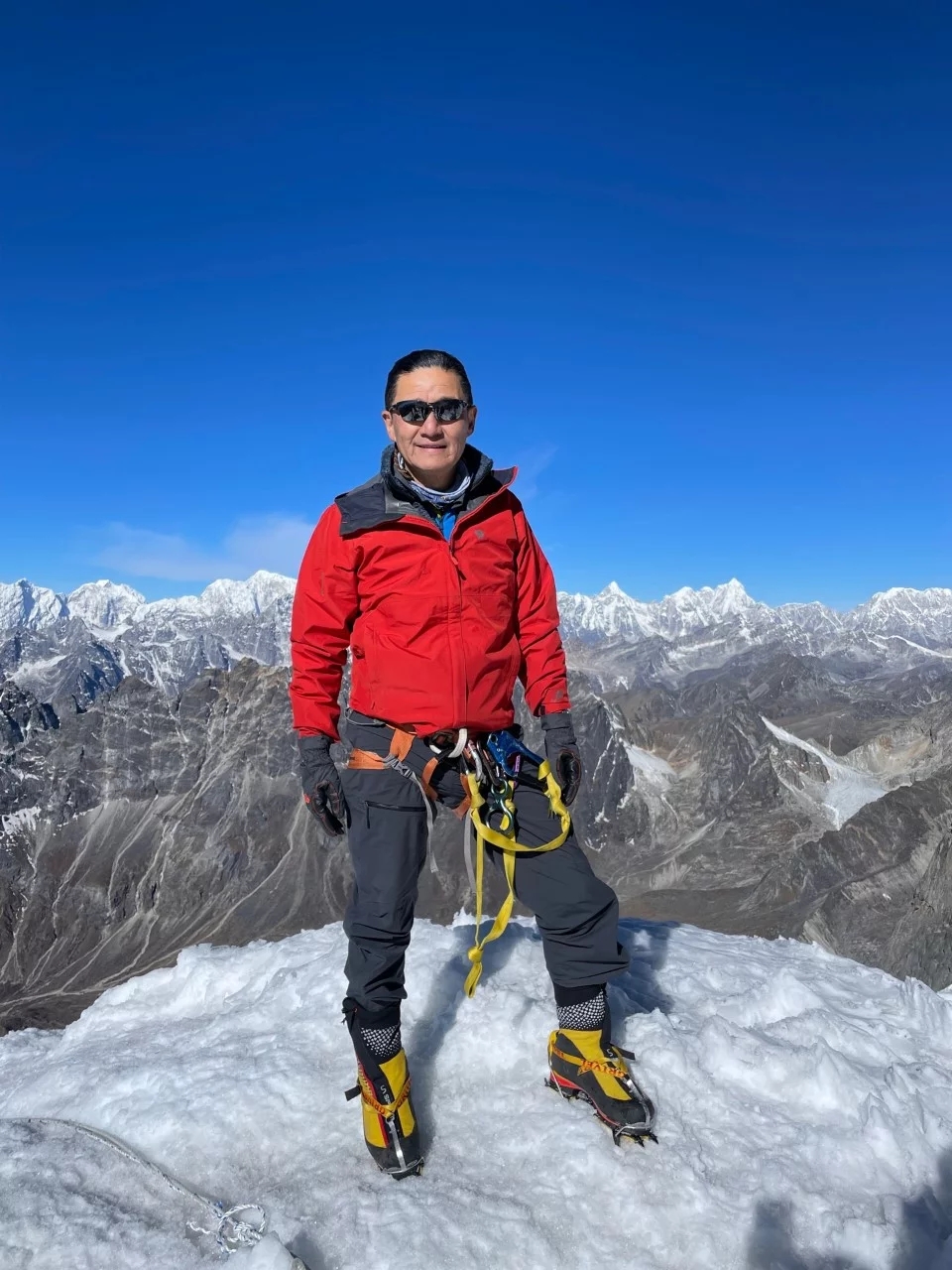WORDS AND ILLUSTRATIONS BYJamling Tenzing Norgay
We Sherpas have long respected our mountain environment because of all that it provides. The mountains deliver us water, with which we irrigate our fields. The pastures produce grass and fodder for our livestock and medicinal plants for curing our bodies. And the cliffs and high valleys offer refuge for spiritual practice, wonder, and reflection. Indeed, the mountains are where our livelihoods and legends were born.

My Everest climb really began years ago, when I was eighteen. An Indian expedition came through Darjeeling en route to the mountain, and I asked my father to help enlist me on the team. He told me I was too young, I wasn’t ready. That was my first obstacle, and the path to finding those footsteps took me through college in America, to the tops of smaller peaks, by way of my father’s death and then my mother’s death. Each of these trials prepared me, I learned, for the challenges that confronted me on Everest.
My father showed me the path to the summit of Mt. Everest [Chomolungma], and I followed in his footsteps. But he also knew that I would have to find my own way, that I would have to climb the mountain myself. Only when I reached the summit did I fully understand this, and I understood him, too, in a way I had not before. Indeed, as I gazed across Nepal’s fertile valleys and Tibet’s wind-swept plateau, I felt my father there behind me, off to the side where a patch of rocks meets the snow, just below the summit. He told me he was pleased that I had climbed Everest and that he knew I would be the son to do so. Later, my uncle informed me that this wish was exactly what Tenzing had shared with him, in confidence, years before.
“You can’t see the entire world from the top of Everest”, my father had told me after his successful 1953 climb. “The view from there only reminds you how much more of the world there is to see and learn from.” Indeed, what I learned most from both my father and the mountain was respect. They both demanded it, and when I see climbers flouting that respect, displaying arrogance in the lap of their great teacher, I feel they are putting themselves at great risk.
“You can’t see the entire world from the top of Everest”, my father had told me after his successful 1953 climb. “The view from there only reminds you how much more of the world there is to see and learn from.”

“You can’t see the entire world from the top of Everest”, my father had told me after his successful 1953 climb. “The view from there only reminds you how much more of the world there is to see and learn from.”
During six previous attempts to climb Chomolungma, my father retreated not in defeat but in reverence and humility. He told me that he was able to reach her summit in 1953 as a visitor on pilgrimage – only by virtue of respect for the deities who inhabit the mountain and her foothills. Sherpas feel that some of the many deaths on Mt. Everest can be attributed to a lack of respect and to improper motivation when climbing the mountain. My father has asked me to continue the tradition of honour and homage to the Himalaya, and all mountains, for we will be protected only if we revere the mountains.
The goddess who resides on Everest also resided in my father’s heart throughout all seven of his attempts on the mountain. Clearly, she was blessing him when he reached the summit in 1953, as she was me in 1996. After our climbs, we continued to pray to her, thanking her for granting us safe passage, invoking her for continuing protection, and asking that she bless us with understanding and compassion.
The understanding that my father gained from the mountains – a message that much of the world didn¹t want to hear – was that it didn’t matter who actually placed their foot on the summit first. My father and Hillary were joined by a common rope, and neither could have made the climb alone. But mainly, the argument of who was first is unfair to the selfless spirit of mountaineering, and it dishonours the goddess of Everest, for the mountains are no place for politics and ego.

It is said that a millennium ago, the great yogi-saint Milarepa warned against defiling or polluting the surroundings of Chomolungma – Mt. Everest. In the 16th century, the people living on her flanks forgot these words, and a period of hardship and suffering befell them. I believe that the recent increase in Himalayan climbing deaths and disastrous avalanches and landslides are symptoms of a new era of pollution and defilement. We must reclaim respect for the mountains and the fragile environment that surrounds them.
What is the meaning of the few brief moments in human history when people have stood atop Everest or other high peaks? Its meaning depends on the motivation of the person standing there. Those who are prepared to truly see and listen will find something different and greater than what they were seeking. They will find that the spirit and blessings of the mountains can be found, ultimately, within all of us.
For me, mountain climbing is an intensely personal experience, it is the intersection of my heritage with my spiritual belief and practice. Some climbers are driven by personal achievement and the desire for a trophy. Others are drawn to the mountains by something more mysterious and deeply personal, and I feel that these climbers are sharing my pilgrimage. We are companions on the same journey, compelled not only by a desire for self-understanding but also by a need to experience and understand the nature of the world.
I felt a tremendous sense of achievement when I reached the summit, but I also found it to be only a first step, a beginning. This was a daunting thought, but only until I realized that Everest was a necessary first step, the step that freed me from my ambitions and my inadequacies, launching me onto the path of mindfulness and understanding.
